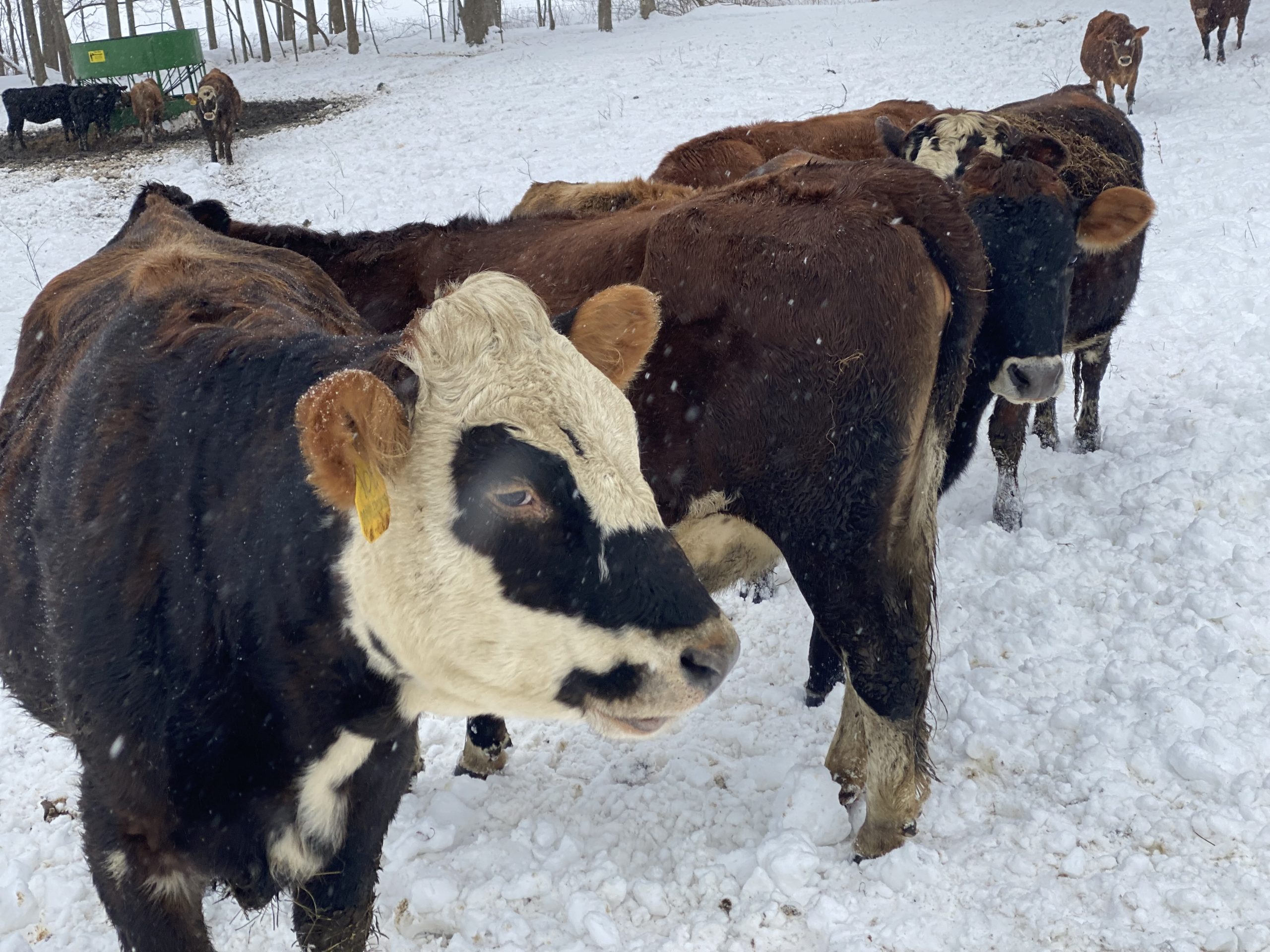
What is Bad Weather for a Cow?
“How cold is too cold for a cow?” is a common question we get here at the farm. With an early February cold-snap sending temperatures well below zero and another current dip, this is a very reasonable question.
Cold temperatures, however, are not our biggest concern when evaluating the weather, though it shouldn’t be ignored. Precipitation and wind need to be considered and can drastically alter the situation.
Cows run at a high average temperature relative to humans — ~101.0 F. With their rumen constantly working to break down grass, their metabolisms help to keep them warm, and allows them to withstand quite cold temperatures.
A well-conditioned cow with a heavy winter coat won’t start experiencing cold stress until the air temperature drops below 18F. At this point, they need to adjust to maintain core body temperature. The easiest way to do this is through increased energy intake — they can eat more or eat the same amount of a higher quality feed. If cows are not given access to feed that meets their increased requirements they will start metabolizing body-mass to produce the required energy. This will result in weight-loss and ultimately poorly conditioned and potentially sickly cows.
Even one cold night could have a significant impact as cold stress can make animals more susceptible to illness.
As temperatures drop we make sure that all groups have plenty of access to feed that will allow them to endure extreme cold. In general this is an easy thing to do and doesn’t change much of our daily routine.
Wind also has a big impact and the concept of wind chill is just as applicable to cows as it is to humans. When we plan our winter setup, we need to be sure that every group has access to a good windbreak. For the dairy cows, this is the barn, but most of our other groups spend the majority of the season outdoors. A windbreak may be a cluster of trees, a low spot in the field, the side of the building, or even an old cellar hole. At 0F a 10mph wind will result in an effective temperature 10 degrees colder, or -10F, illustrating the import of shelter.
Temperature and wind can create challenging conditions for humans and animals alike, but the biggest issue is precipitation — particularly rain. Above I mentioned the heavy winter coats that cows grow. They act as critical insulation, but must be dry and fluffy to function well. Imagine what happens when your down jacket gets wet…
Remember that 18F point at which cold stress starts? Take the same animal and hose it down in a rain storm, and the critical point rises all the way 59F, and that assumes no wind chill. The worst weather we can get is cold rain, with temperatures dropping below freezing. Us humans tend not to appreciate 38 degrees and raining, but we can layer up with wool and down under a waterproof shell. And at the end of the day we can have a hot cup of tea and a shower.
Here in New England, this type of weather is unfortunately common. I personally love winter and would be happy for long stretches below freezing and such conditions are fairly ideal on the farm. Warmer weather in the winter means mud and ice all over the place, and most importantly it often results in wet animals. This year we have brought extra focus to this issue, bringing all outdoor groups inside for periods of rain with cold temperatures to follow. Of late that has meant mini cattle drives once a week.
We expand our pen out back, where we currently house the dry cows. It gets a bit tight with over twenty heifers and an assortment of beef, But somewhat close quarters for a night is drastically preferable to the alternative. We have improved our feeding system, utilizing feeding panels to minimize waste and maintain good access. This fall we identified our incitement weather plans as a top priority and, while the added work is significant, we are very happy with the results.
On any given day you might find a herd of heifers out back, or just an empty pen.
